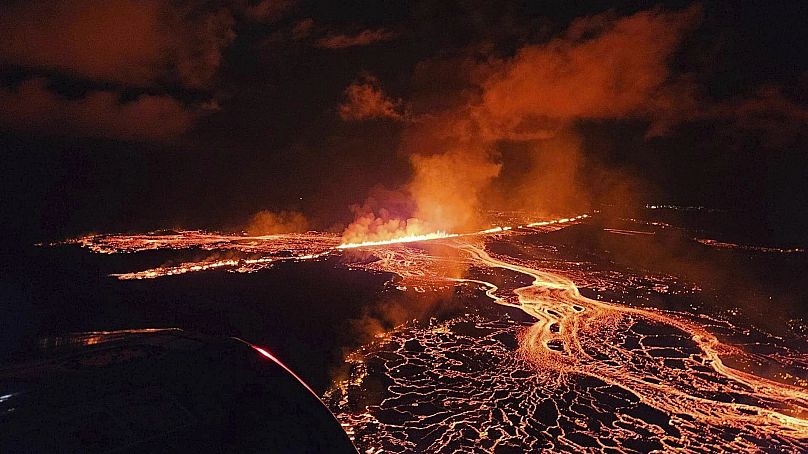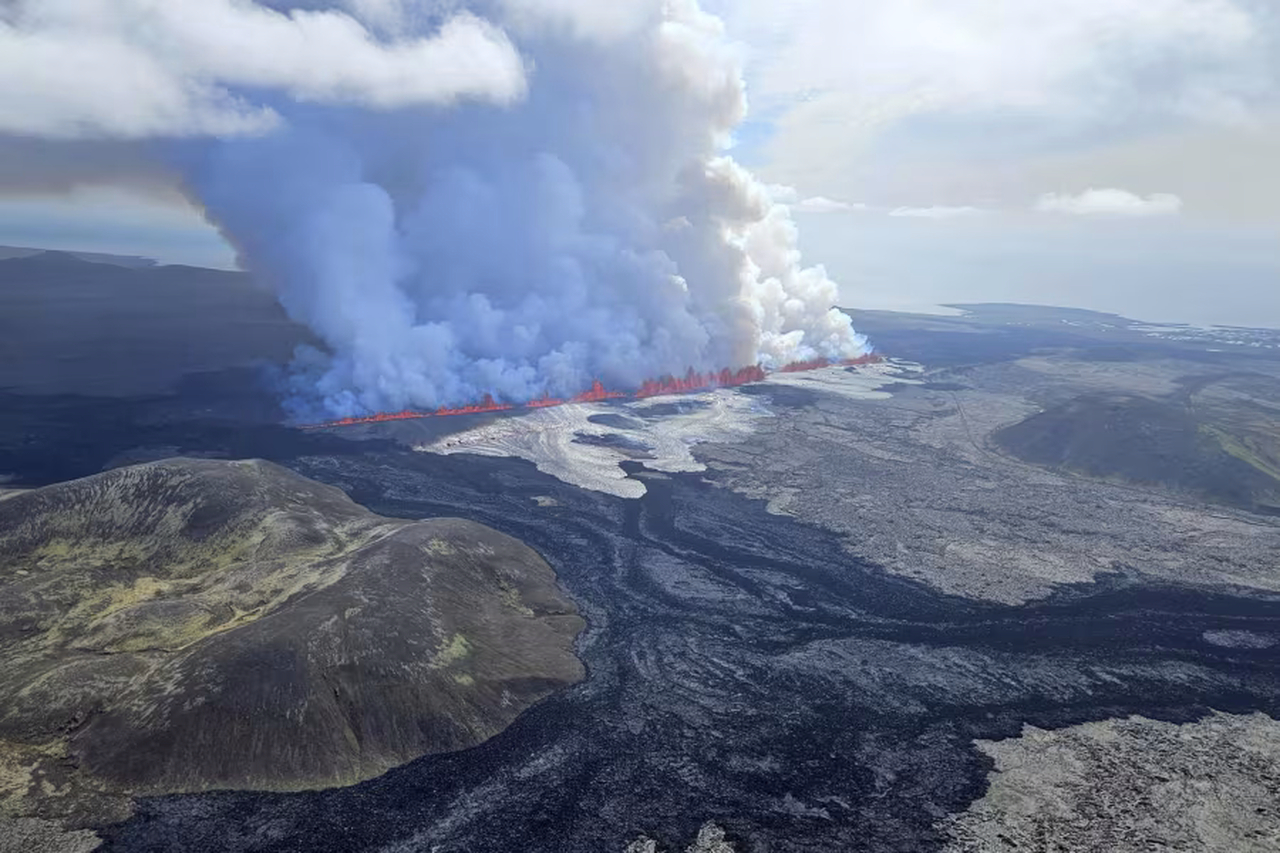
The eruption observed from the Icelandic Coast Guard’s helicopter on 16 July 2025
On 16 July 2025 at 3:54 UTC, nearly three hours after a swarm of 4–6 km deep earthquakes exposed a south-north dike beneath the crater row, the ninth eruption broke out just south-east of Litla‑Skógfell. The initial fissure, measuring 700–1,000 m, lengthened to roughly 2.4 km within eight hours. A parallel 500 m crack and advancing pāhoehoe flows expanded the lava field to over 3.2 km2, as confirmed by ICEYE satellite imagery. Within 24 hours, the fissure fragmented into 10–12 active cones. By 19 July it had consolidated into about two or three cones and to a single cone by 22 July. As of 23 July, the lava field had expanded to 3.3 km2 in area and 26.8 million m3 in volume. As in the February 2024 and May–June 2024 eruptions, this eruption interacted with groundwater, violently ejecting grey ash and smoke into the air in certain areas. Because earlier models had predicted the next eruption in autumn 2025, this mid‑July event caught volcanologists by surprise.
An evacuation was carried out in the area, affecting approximately 200 people at the Blue Lagoon and over 100 residents and visitors in the town of Grindavík, including around 20 to 30 campers at a local campsite. Two United Airlines aircraft headed for Keflavík Airport returned to their points of departure on the airline’s own initiative, without having received any specific advisories or instructions from Icelandic air traffic control. Access to the volcano is currently permitted, and conditions for visiting the eruption are considered the most favorable since the Fagradalsfjall eruptive series of 2021–2023. The location of the eruption, combined with the availability of parking facilities along the peninsula’s south coast, attracted large numbers of tourists and other visitors, resulting in full parking lots in the area. Some people were even seen walking on the recently cooled lava, most of them foreign tourists. This behaviour was also frequently observed during the previous eruptive series, and the Icelandic Meteorological Office warns that it is "life‑threatening", as the thin surface crust can collapse without warning, exposing molten lava beneath. The eruption did not cause any damage to infrastructure in the surrounding area.
Warnings were issued shortly after the onset of the eruption due to volcanic gas, and the highest sulfur dioxide (SO₂) levels were recorded in Njarðvík just a few hours after the eruption began, peaking at 6,284 µg/m³ (2,398.21 ppbv). During the first days, the eruption released a sulfur dioxide-rich plume over Reykjanesbær and into the Capital Region, where sulfur dioxide levels also reached a local record high since volcanic activity began on the Reykjanes Peninsula - exceeding 2,000 µg/m3 (763.28 ppb), compared to typical readings below 5 µg/m3 (1.91 ppb). About a week into the eruption, sulfur dioxide emissions from the fissure vent were around 100 kg/s but dropped significantly the following day to 25–44 kg/s. Within two weeks, volcanic gas emissions from the eruption led to a mild but visible haze of sulfate particles (SO₄) across the country, formed as sulfur dioxide reacted with moisture and oxygen in the atmosphere. This led to an increase and temporary burden on clinics and local health centres, as people experiencing various symptoms sought medical advice. Despite the situation, specialists emphasize that the pollution is not a "poison gas". In early August, volcanic tremor and explosive activity declined, coming to a complete halt on 4 August. On 5 August, the eruption was declared over, as police-operated drone imagery confirmed the absence of activity within the craters.
in Wikipédia





















